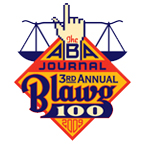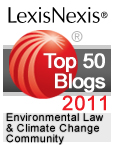[Many thanks to Chris Cheatham for collaborating with me on this post]
Today, the Waxman-Markey bill, otherwise known as the American Clean Energy and Security Act (H.R. 2454) is set to be voted on in the House of Representatives. The very fact that the vote is occurring means this bill will pass in the House. This monumental bill would establish a cap-and-trade program to cut global warming pollution. Of course, a cap-and-trade program faces an even more difficult path in the Senate.
So what is a cap-and-trade program exactly (PDF)?
The cap: Each large-scale emitter, or company, will have a limit on the amount of greenhouse gas that it can emit. The firm must have an “emissions permit” for every ton of carbon dioxide it releases into the atmosphere. These permits set an enforceable limit, or cap, on the amount of greenhouse gas pollution that the company is allowed to emit. Over time, the limits become stricter, allowing less and less pollution, until the ultimate reduction goal is met.
The trade: It will be relatively cheaper or easier for some companies to reduce their emissions below their required limit than others. These more efficient companies, who emit less than their allowance, can sell their extra permits to companies that are not able to make reductions as easily.
Companies will be required to purchase the emissions permits from the federal government, which in turn results in a sizeable revenue stream to the federal government. Much of the back room politicking that has occurred over the last few weeks regarding the Waxman-Markey bill has involved how this revenue stream will be allocated to government programs.
In addition to establishing an overall Cap-and-Trade program for carbon emissions, the Waxman-Markey bill contains several provisions which involve green building, and many green building and energy efficiency programs will be funded by the cap-and-trade revenue. Below is a summary of some of the major provisions regarding green building contained in the Waxman-Markey bill.
Section 201: National Energy Efficiency Building Codes
Section 201 of the Waxman-Markey Act calls for the development and adoption by state and local governments of a national energy efficiency code. A summary of the main provisions are as follows:
1. Establishes a “national energy efficiency building code” for residential and commercial buildings, sufficient to meet each of the national building code energy efficiency targets.
2. Sets energy efficiency targets for the national building code: “on the date of enactment of the American Clean Energy and Security Act of 2009, 30 percent reduction in energy use relative to a comparable building constructed in compliance with the baseline code…effective January 1, 2014, for residential buildings, and January 1, 2015, for commercial buildings, 50 percent reduction in energy use relative to the baseline code; and…January 1, 2017, for residential buildings, and January 1, 2018, for commercial buildings, and every 3 years thereafter, respectively, through January 1, 2029, and January 1, 2030, 5 percent additional reduction in energy use relative to the baseline code.”
3. If consensus based codes provides for greater reduction in energy use than is required under the ACESA, the overall percentage reduction in energy use provided by that successor code shall be the national building code energy efficiency target.
4. Requires that states and local governments comply with or exceed the national energy efficiency building code, and provides for enforcement mechanisms for states which are out of compliance.
The federalization of building codes has the potential to save consumers large amounts of money on their energy bills by enhancing the energy efficiency of buildings nationwide, as well as addressing the 38% of carbon emissions generated by buildings in a comprehensive manner. On the other hand, it represents a major shift in the balance of power over building and land use regulation. Traditionally, building codes, like almost all land use regulation in the United States has been a local (in some cases, state) issue. This makes for a patchwork of different codes across the nation. Indeed, thirteen states have no statewide commercial building codes, and fourteen states have no statewide residential building code.
Proponents of local control of regulatory authority argue that local government can more appropriately respond to local conditions and can experiment more freely with different types of regulations than would be possible at the federal level. On the other hand, federal control of building codes provide uniformity across the country for a problem which does not respect state and local borders, prevents local challenges to individual energy efficiency efforts (like AHRI v. City of Albuquerque) and, given the large number of states which do not have a current building code at all, provides more effective regulation of this important source of carbon emissions.
Section 131, 132: SEED funds
According to analysis completed by the American Council for an Energy-Efficient Economy,
allocations detailed in Section 782g direct 9.5% of allowances in 2012 (and decreasing amounts thereafter) to go into a State Energy and Environmental Development (SEED) account to be used by state and local governments for efficiency and renewables projects.
The allocation of SEED money will be at the discretion of local and state authorities.
One of the programs that can be funded by these allocation are Property Assessed Clean Energy (“PACE”) Bonds. PACE bonds involve loans to commercial and residential property owners to finance energy retrofits. Through the interest generated on these bonds, a revolving fund is established to allow for even more retrofits to occur. Already, California and Missouri have announced plans to use funding from the Department of Energy State Energy Program to establish PACE bond programs. Look for more states to jump on the PACE bond bandwagon and use cap-and-trade revenue to fund similar programs.
Section 202: REEP Program
With the American Recovery and Reinvestment Act, the Department of Energy’s State Energy Program received billons of dollars. Under the Waxman-Markey bill, the State Energy Program will again receive billions of dollars for more energy efficiency retrofits. From the Pew Center on Climate Change (PDF):
This section requires the Secretary of Energy to develop a Retrofit for Energy and Environmental Performance (REEP) program to facilitate building retrofit programs for energy efficiency and efficient water use. Funding will be made available through REEP to the State Energy Programs for state and local efforts, including audits, incentives, technical assistance, and training. States are permitted to choose funding mechanisms, with options including credit support, such as interest rate subsidies or credit enhancement, providing initial capital, and allocating funds for utility programs.
The REEP program has not been created yet so it is unclear what the program will look like. Based on the DOE’s previous support for PACE bond programs when allocating ARRA funds, don’t be surprised to see even more of these programs established through REEP.
Green Act: H.R. 2336—Amendment to Waxman-Markey
On May 7, 2009, Rep. Ed Perlmutter (D-Colorado) introduced H.R. 2336, the Green Resources for Energy Efficient Neighborhoods Act of 2009 (“GREEN ACT”). According to Perlmutter’s office, “The GREEN Act provides incentives to lenders and financial institutions to provide lower interest loans and other benefits to consumers, who build, buy or remodel their homes and businesses to improve their energy efficiency and use of alternative energy.”
In essence, the Act:
1. Encourages energy efficiency in HUD housing by offering block grants and credit for energy improvements in the underwriting of mortgages;
2. Provides that Fannie Mae and Freddie Mac will have a duty to serve very low, low and moderate income communities while developing underwriting standards to facilitate a secondary market for energy-efficient and location efficient mortgages;
3. Requires federal banking regulators to establish incentives for the development and maintenance of “green banking centers” for the purpose of providing information to customers seeking information about acquiring green mortgages.
Interestingly, Perlmutter’s GREEN Act passed the full House of Representatives as part of HR 6899, the Comprehensive Energy Security and Consumer Protection Act in September 2008, but the Senate failed to take action on this legislation. The GREEN ACT was added this morning to the manager's amendment to the Waxman-Markey bill.
 This Thursday I will be speaking at the
This Thursday I will be speaking at the 
 Shari focuses on energy, environmental and building code policy, representing international companies, non-profits and trade associations in their policy and communications campaigns
Shari focuses on energy, environmental and building code policy, representing international companies, non-profits and trade associations in their policy and communications campaigns

